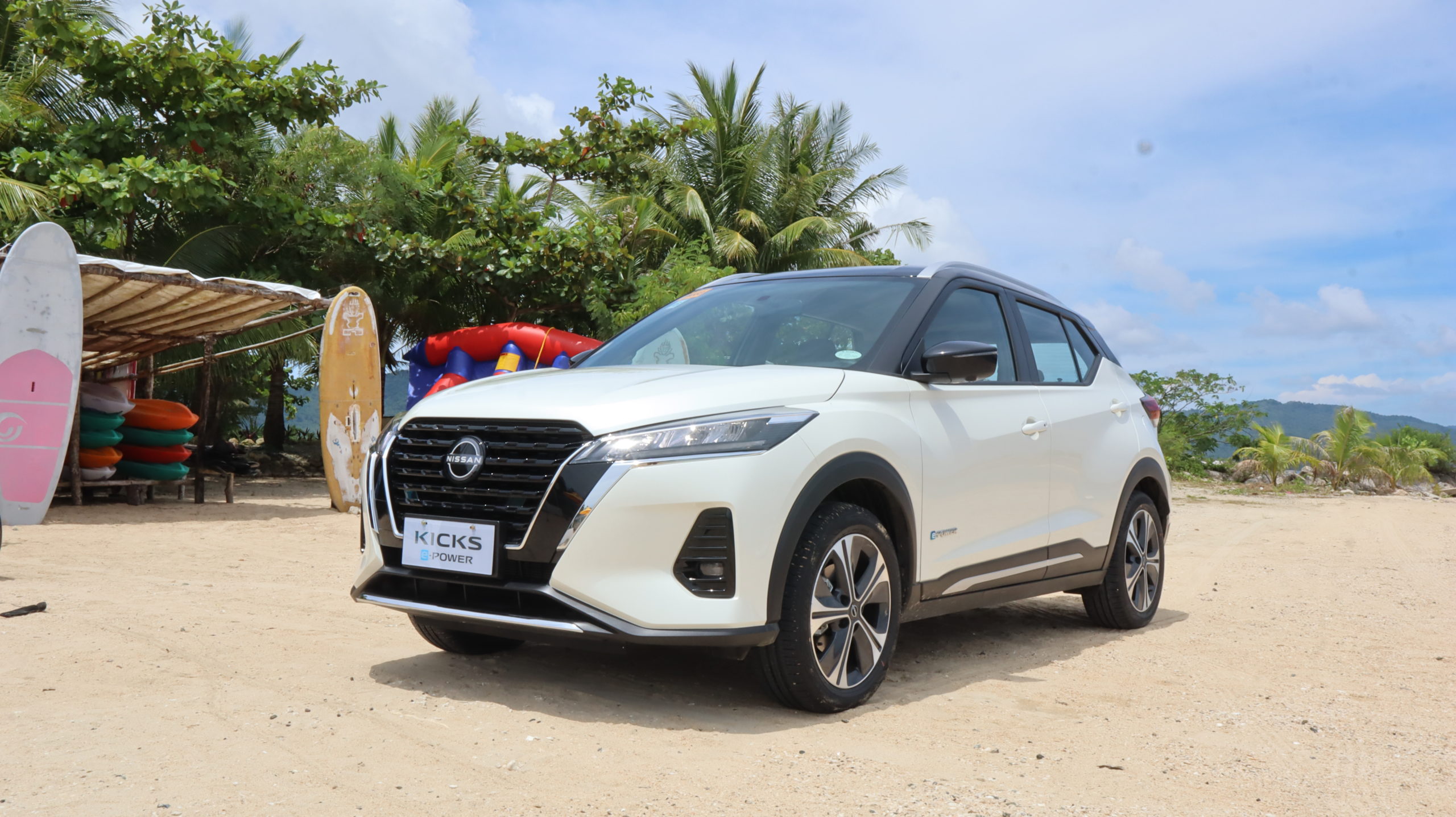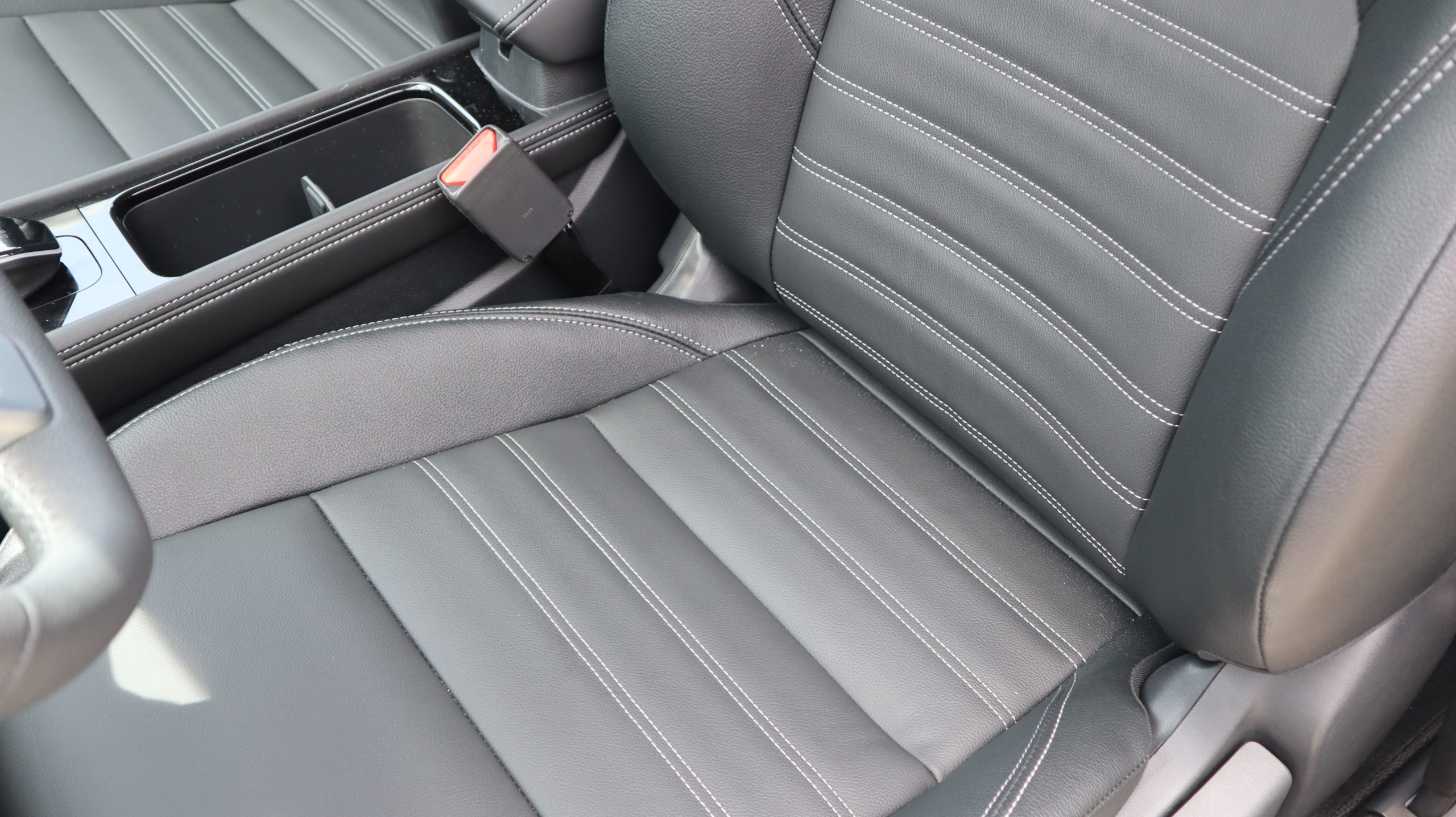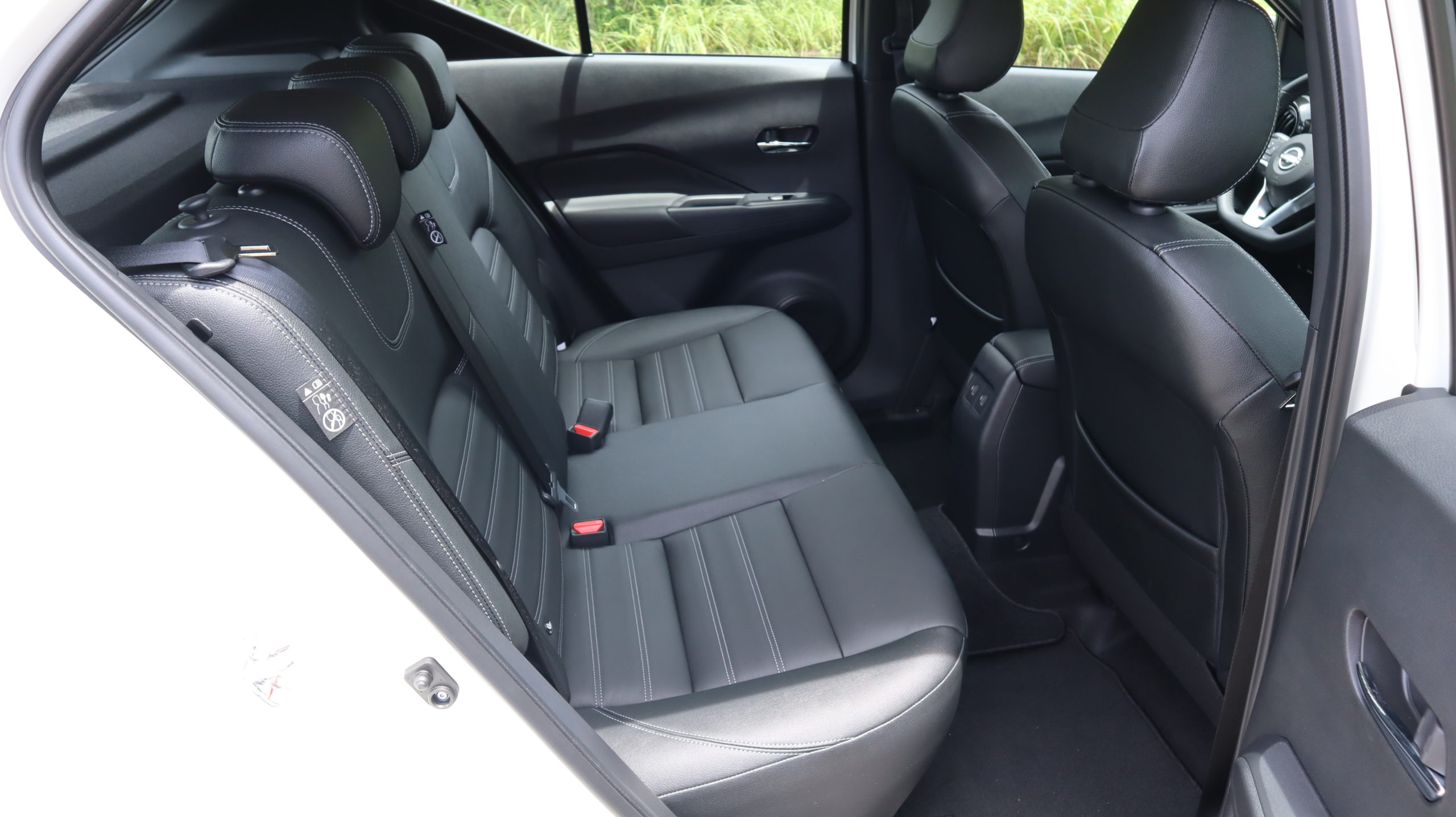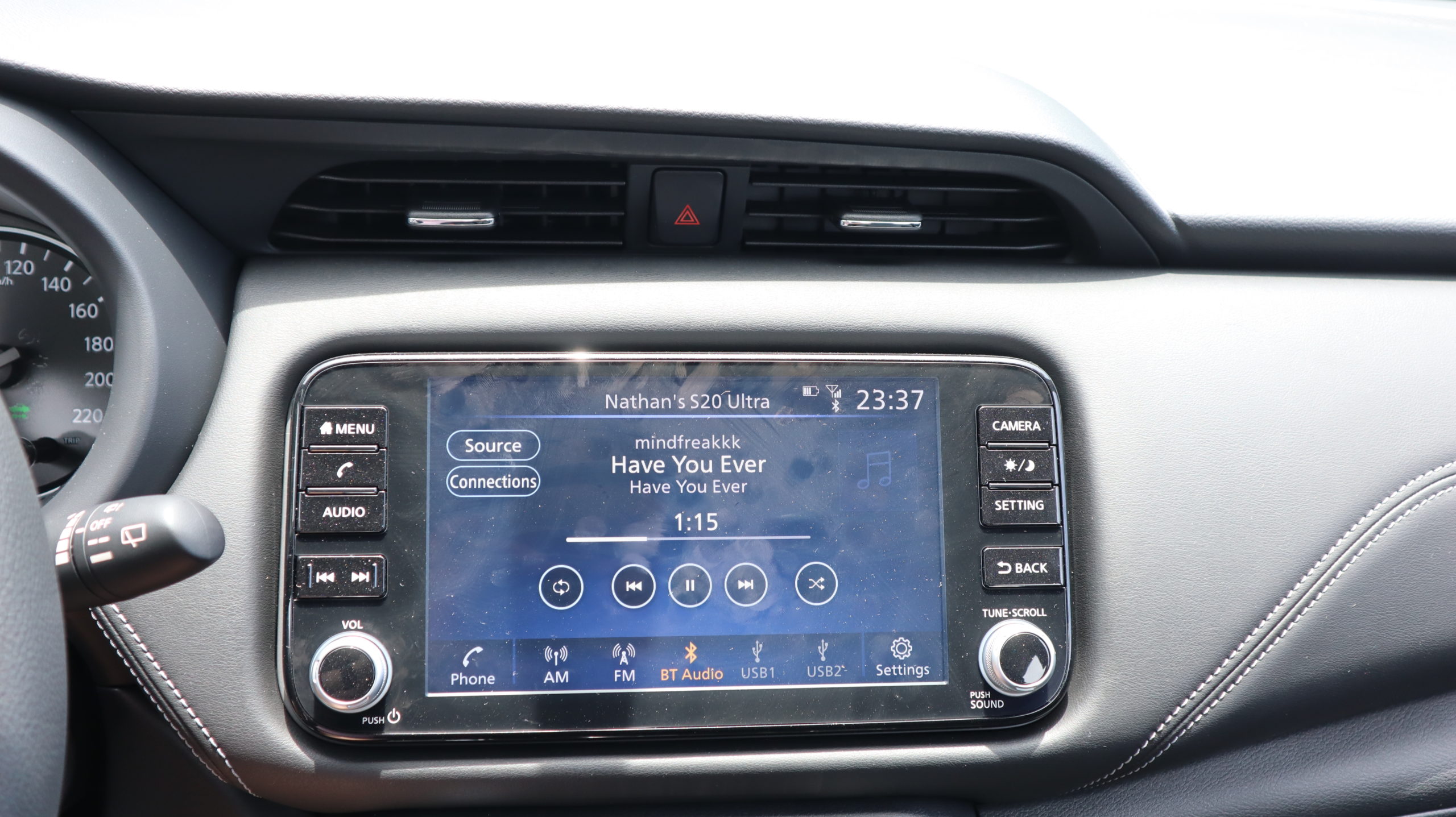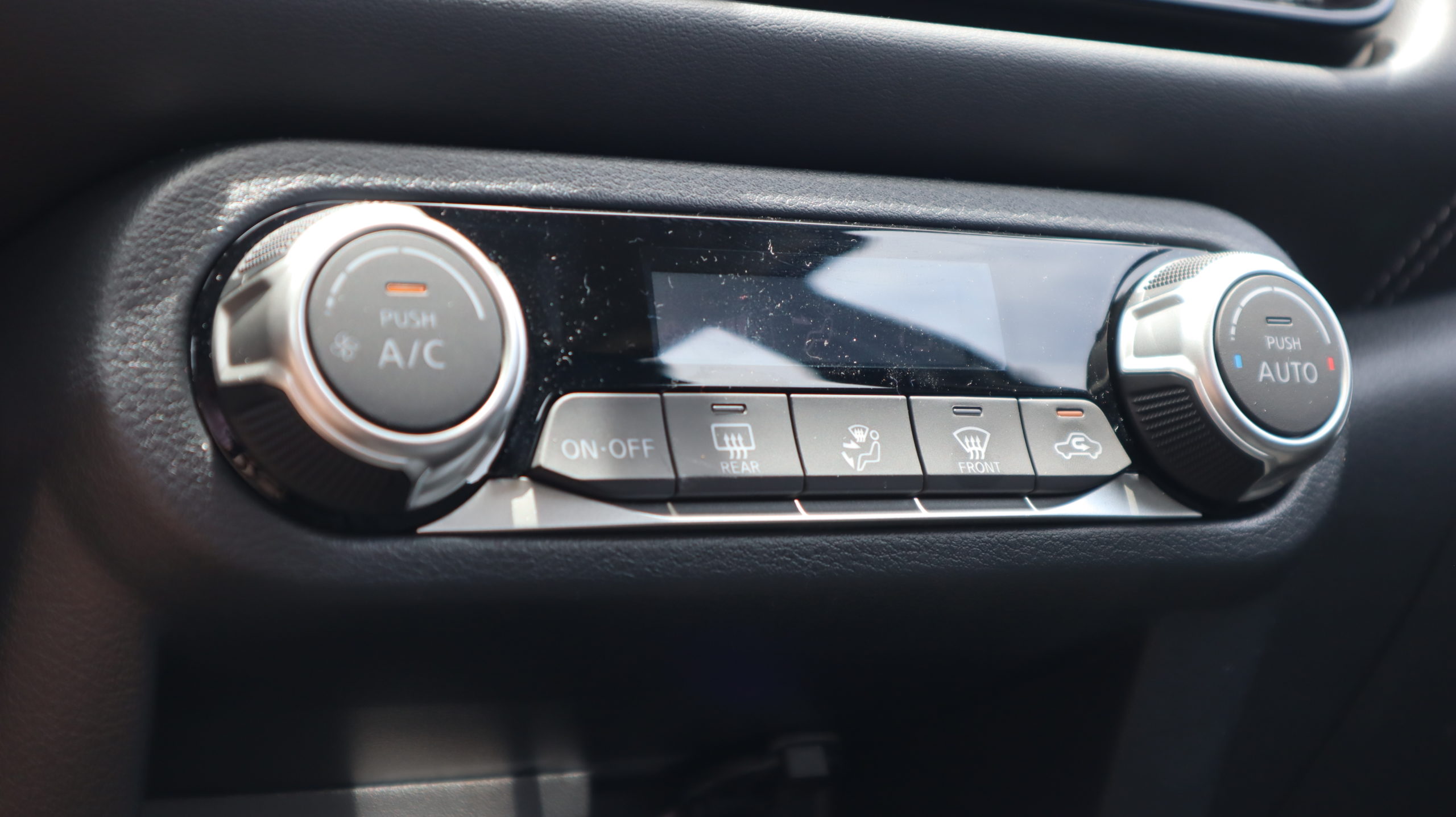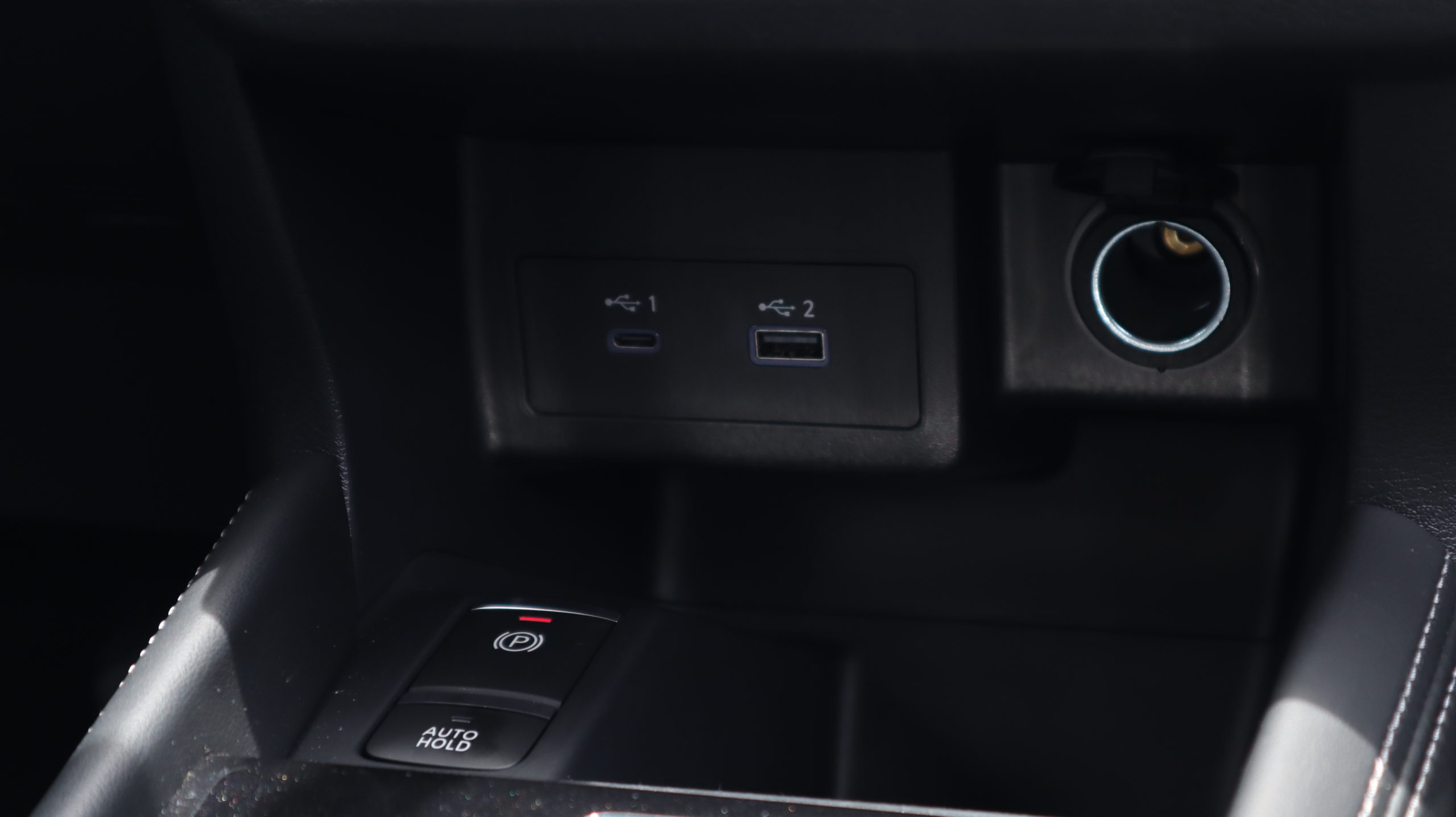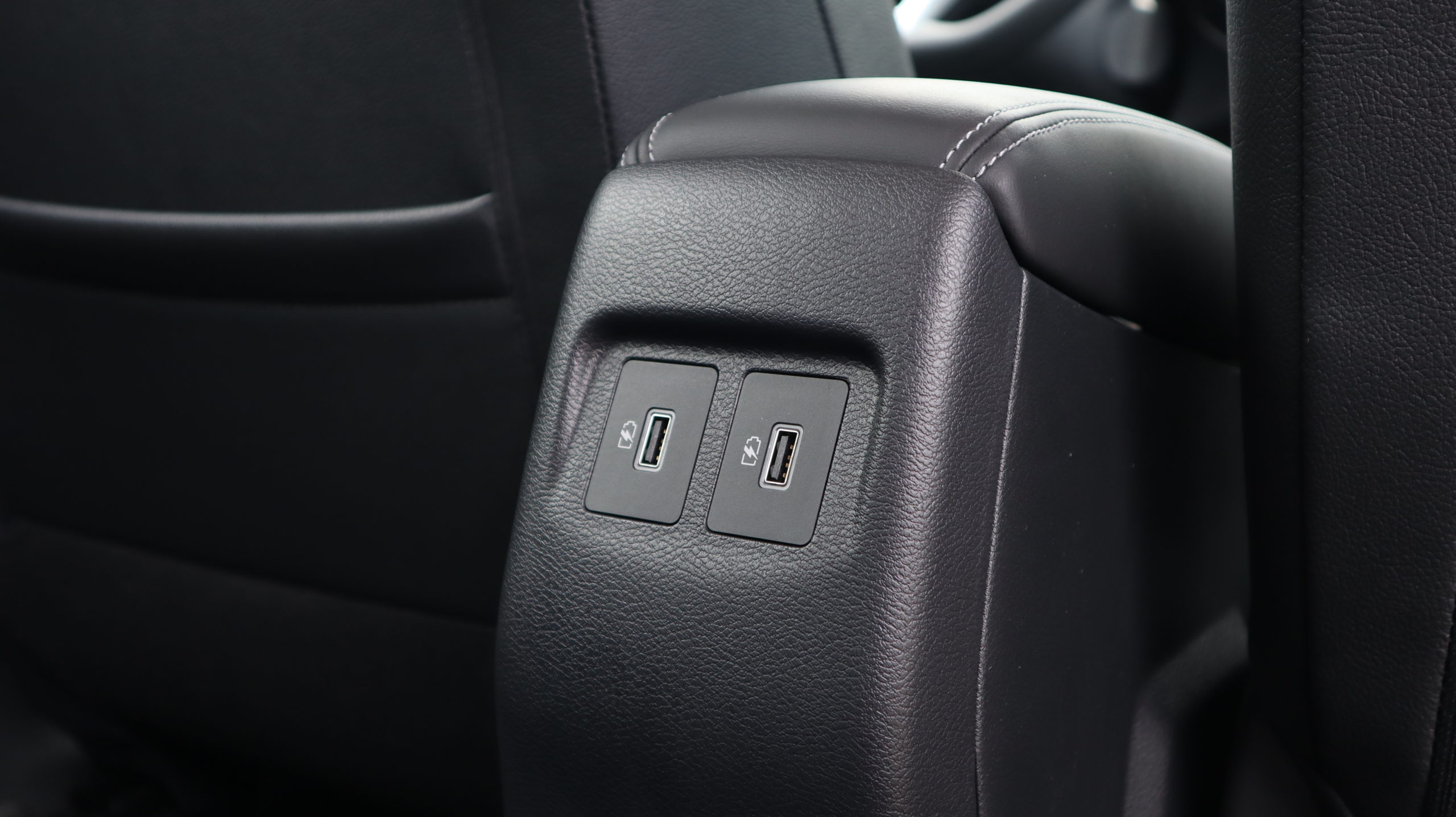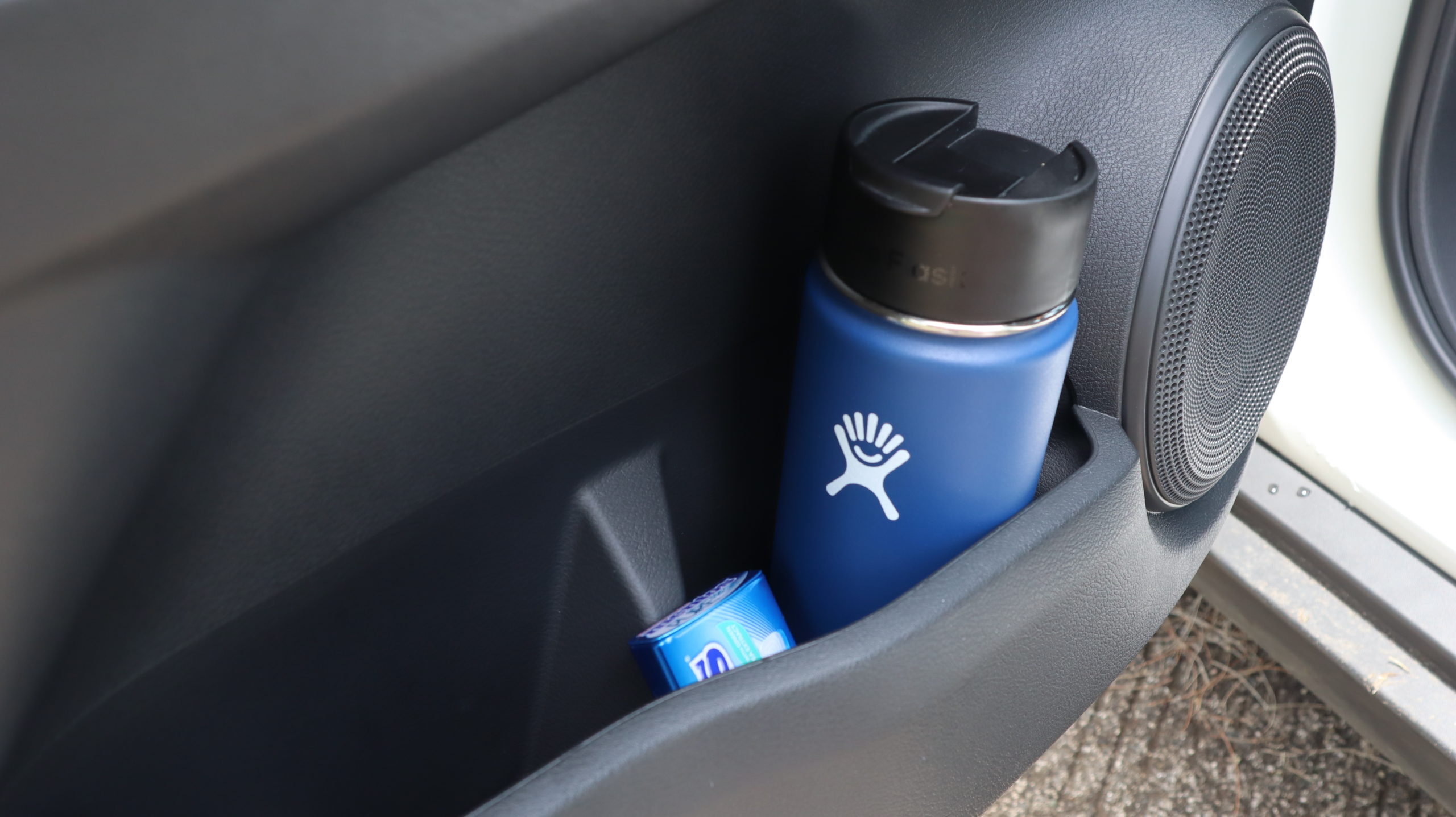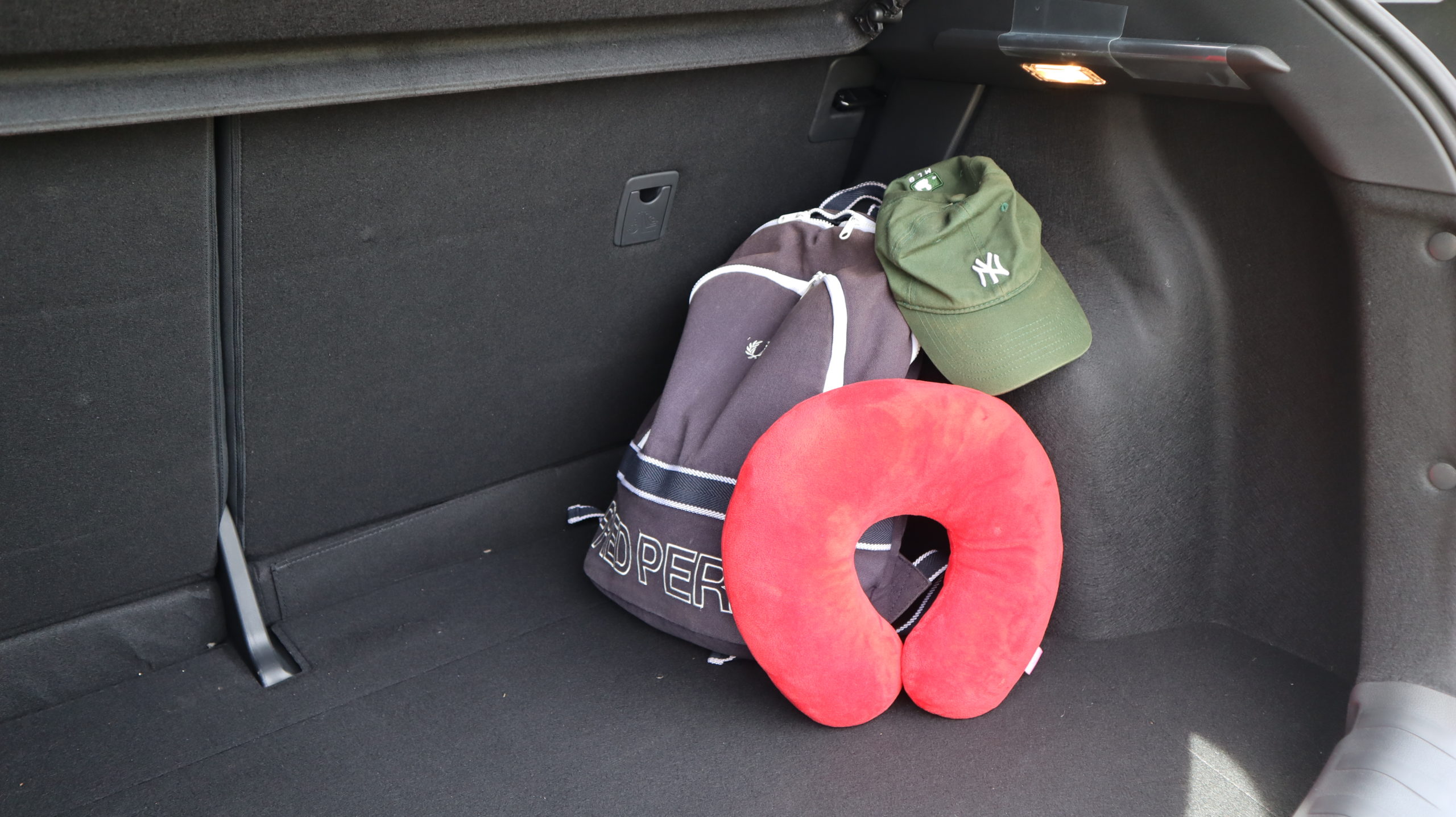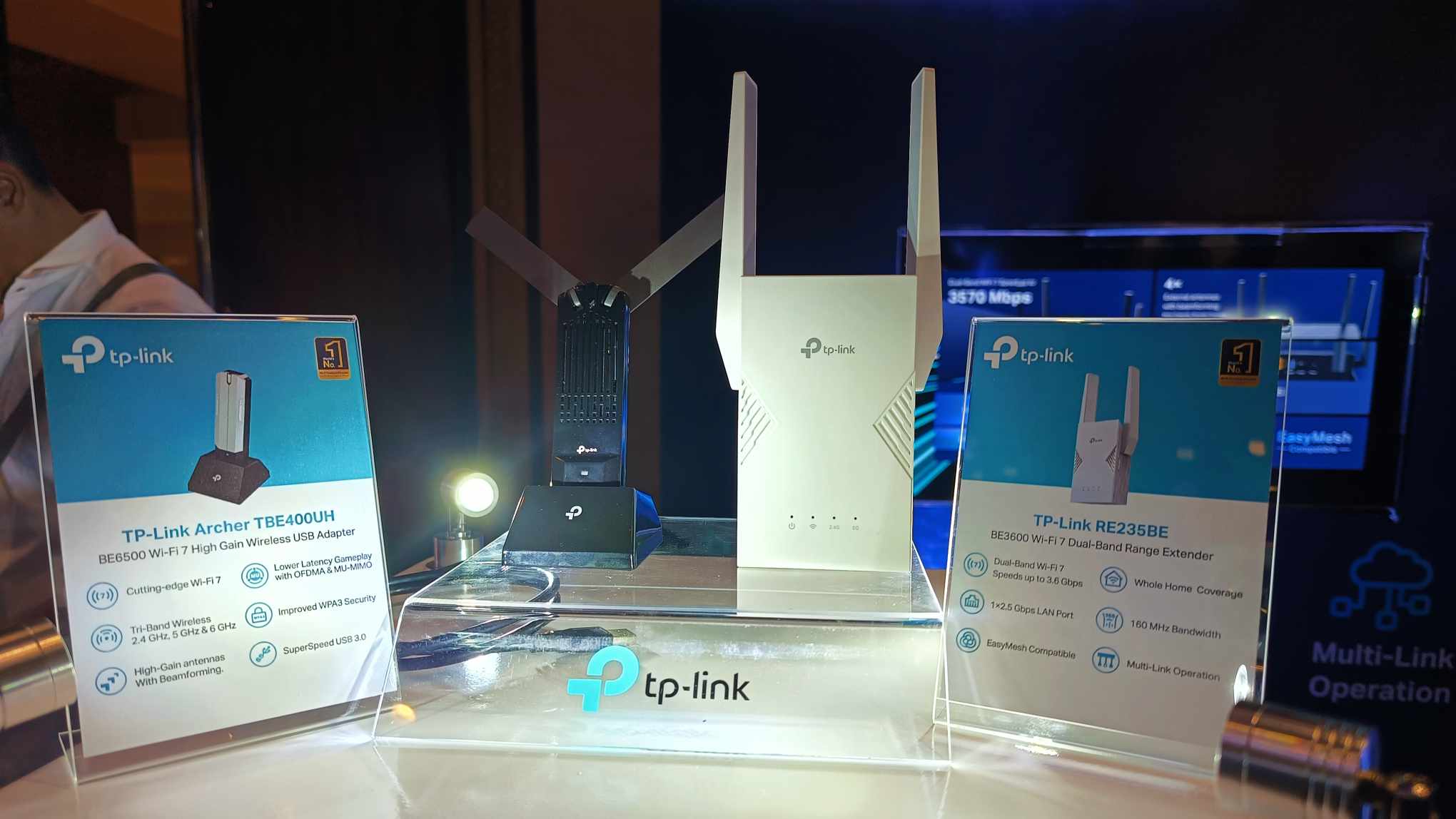We were able to bring the Nissan Kicks e-POWER on a scenic thousand-kilometer trip to Albay, courtesy of the amazing folks at Nissan Philippines. This drive covered all kinds of terrain and gave us a glimpse of what the car would be like to live with every day. Here’s why we think both the e-POWER technology in the Nissan Kicks, and the car itself, are the future.
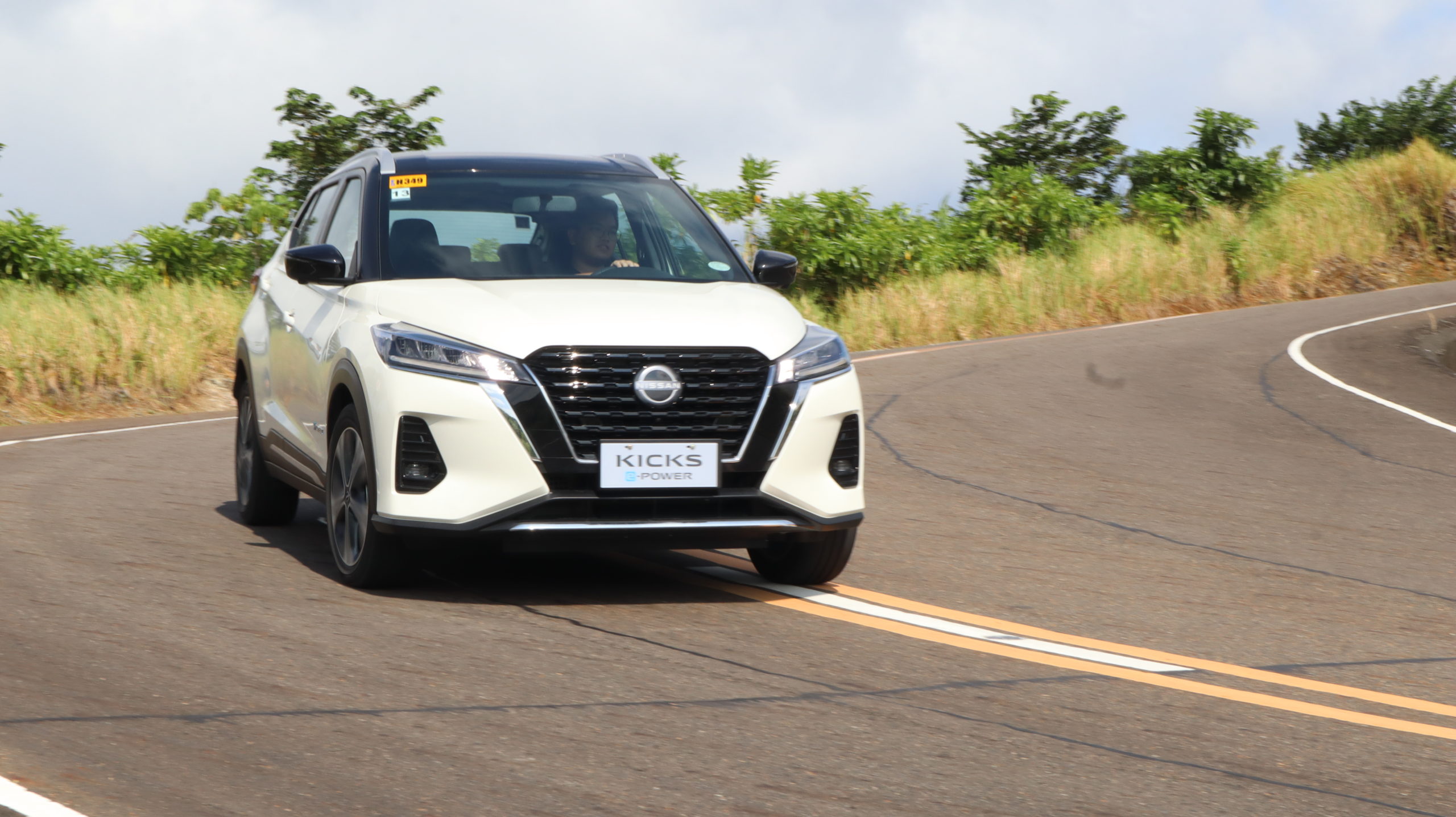
Confident Driving Dynamics
The drive to Misibis Bay is composed of not only highways but also an assortment of twisties and provincial alleyways. For us car enthusiasts, mountain curves are chunks of driving heaven sprinkled across the world by a greater being to make life more fun and exciting.
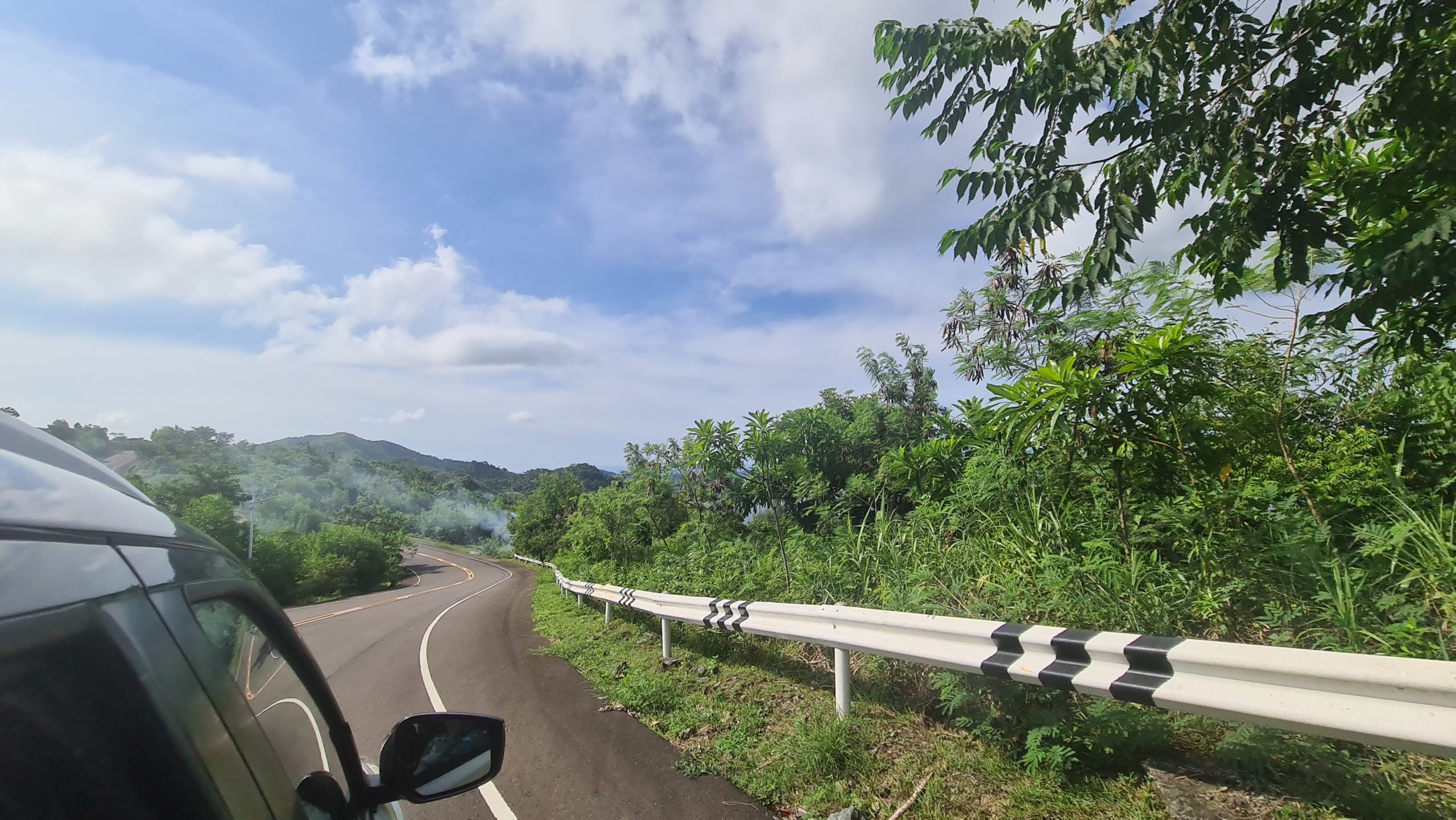
These roads also bring out the very best (or worst) in a car’s chassis. Thankfully in this situation, the Nissan Kicks e-POWER easily carved through the corners with speed and grace. No signs of understeer could be found anywhere within the vicinity. Keep in mind that we drove spiritedly in both dry and damp conditions. The roads weren’t perfect either, as road quality significantly decreased in the more provincial areas. Despite these unfortunate mid-corner potholes, the car was ready to comply and never was it shaken off its path.
The car in either ECO or Sport modes activates the e-Pedal Step regenerative braking, and some corners could be cleared without even touching the brake pedal. A traditional slow-in, fast-out technique was appropriate, punching us with instant electric propulsion the very moment we floored the accelerator.
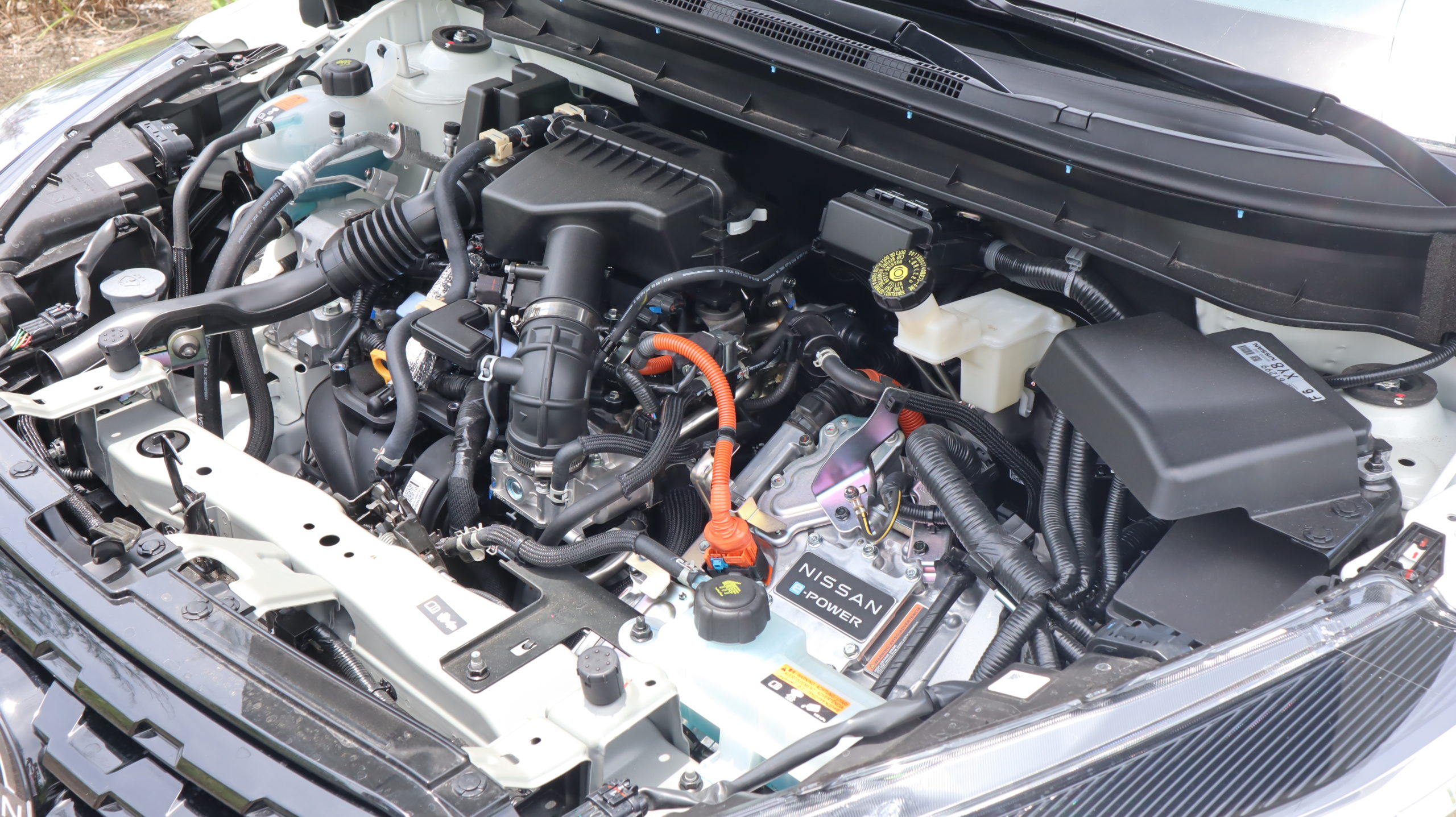
Under the hood is a Nissan e-POWER system with 136PS of power and 280Nm of torque. Despite the fact that we’ve seen similar power numbers (or even better) within the segment before, the electric motor’s rush of power feels like a switch you just turn on. There’s no wait or lag. This was very apparent when coming out of corners as well as getting up to speed on the highway, but where it shone the most was confidence in overtaking.
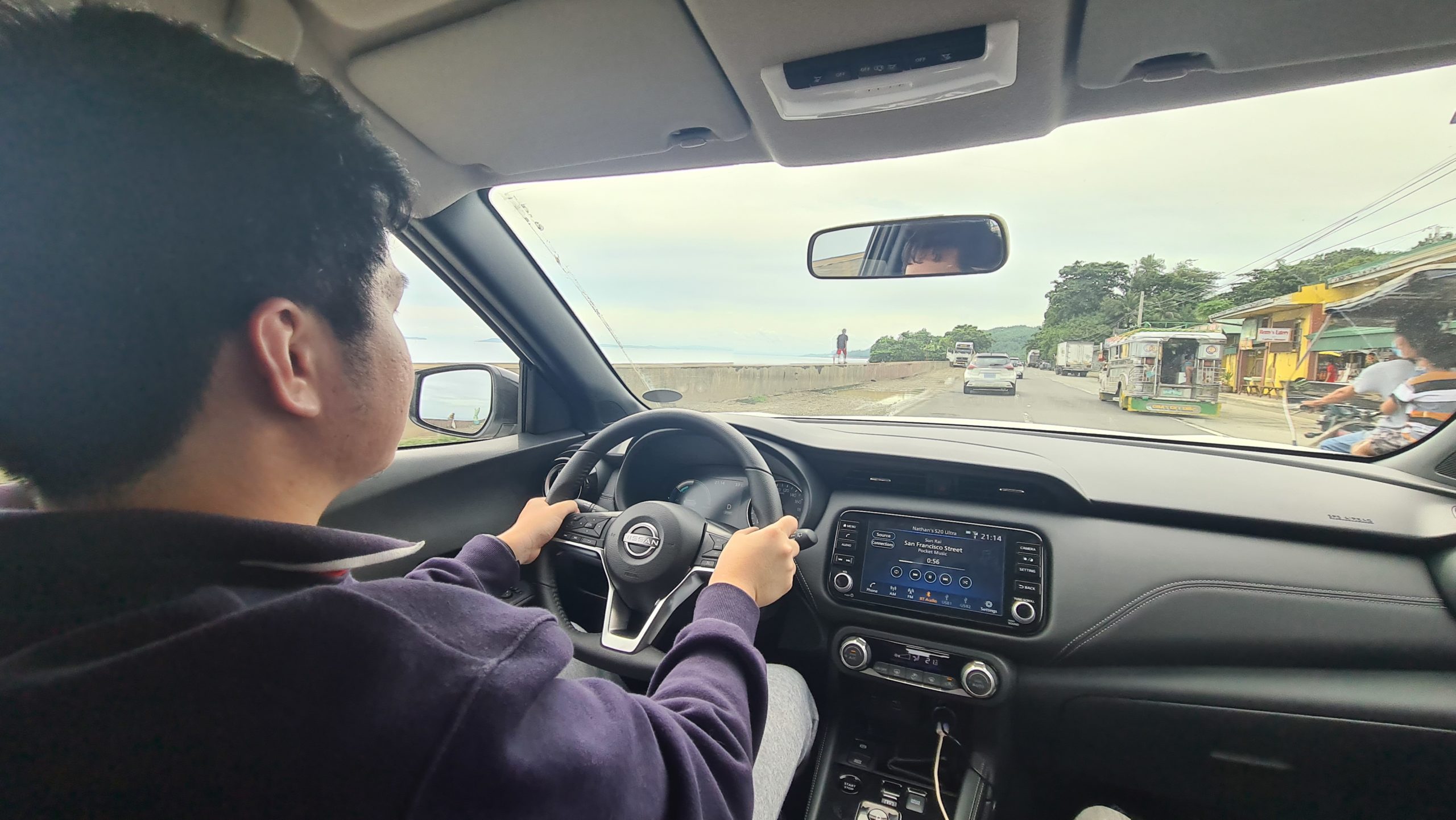
Smaller provincial roads are often split into only two lanes opposing each other. With the convoy split into groups of 6-7 cars, performing overtakes on slower trucks, tricycles, jeepneys, and other vehicles would be seen as a dangerous gamble in other vehicles. A car’s acceleration would be put to its paces since the driver would have to complete the overtake before oncoming traffic suddenly appears beyond the blind corner.
With the instantaneous power delivery seen on the Nissan Kicks e-POWER, the convoy was able to move through traffic with no issues at all. In the 15 hours of driving to Misibis Bay or the equal hours of driving back, never did we wish we had more grunt at the lower end. That’s a big win for Nissan’s unique take on hybrid technology and just proves that it performs just as well on the track as in real life.
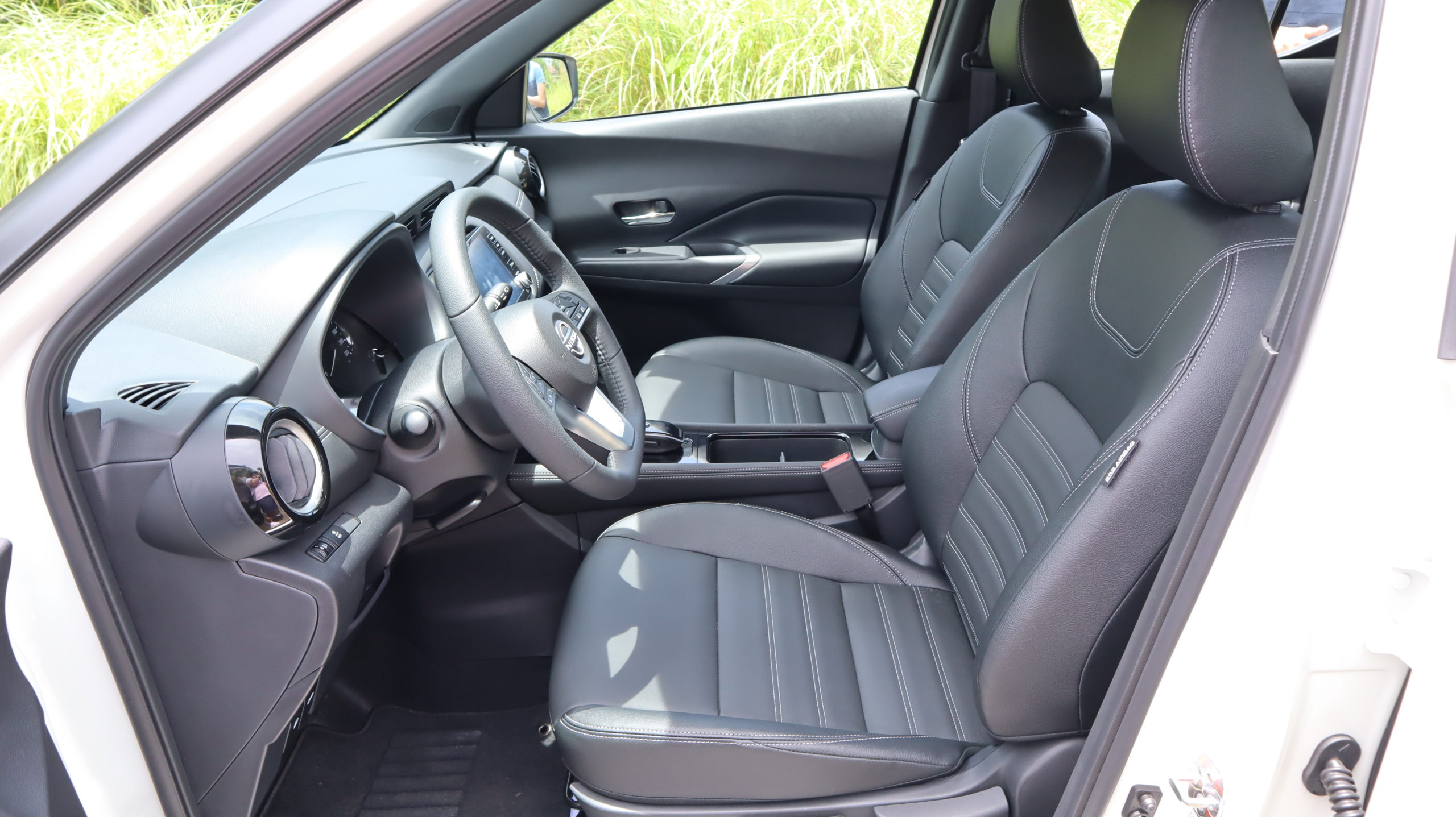
Supple Comfort
The unit we had on hand for this trip was the range-topping VL. That goes without saying that save for some expected goodies such as leather seating and technological upgrades, the three variants are identical at the core.
What’s interesting is this: we’ve done plenty of road trips before, in vehicles that are as much as quadruple or even five times the Kicks’ price. However, we would still feel the brunt of an extensive trip in some of those vehicles especially if we had to drive a portion of the way. The Nissan Kicks e-POWER seems to have ergonomic seat design covered since the usual lower back aches were nonexistent after the drive. None of us felt particularly tired upon arrival at the resort – which is surprising, since we all spent around 15 hours on the road. If you’re following the basic rule in getting 9 hours of sleep, then essentially you spent all your waking hours in a single day driving.
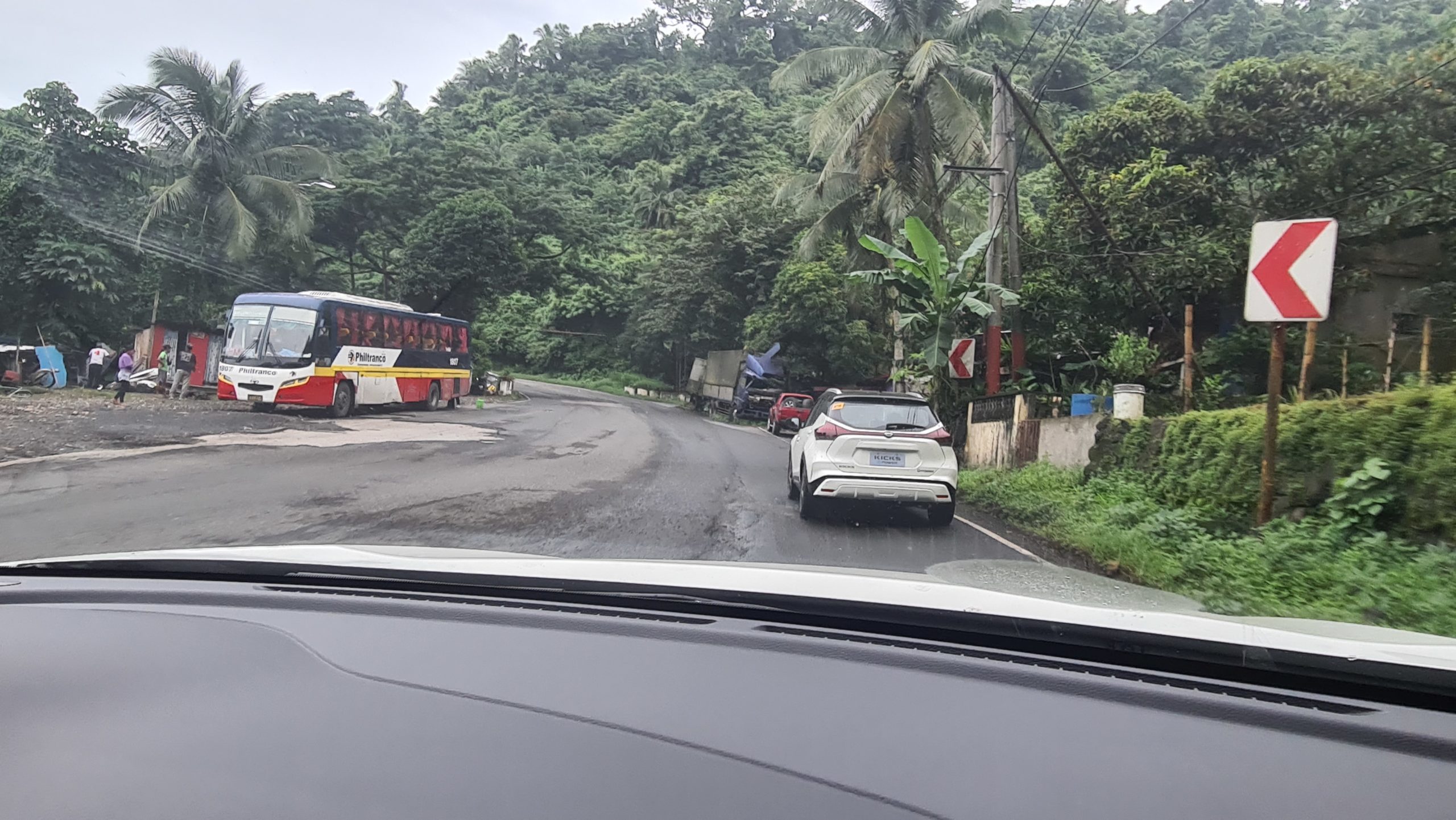
After the sunset, visibility on provincial streets also fell drastically. Some communities rely heavily on natural light and are usually in their homes by the time the sun has completely fallen into slumber. Due to this fact, potholes became increasingly more difficult to avoid which led to us falling into a few nasty ones. These are separate cases from the mid-corner bumps we mentioned in the previous section.
The Nissan Kicks e-POWER took these all in stride. It’s no Rolls Royce Cullinan, but the front McPherson and rear torsion beam setup absorbed bumps and road imperfections in a way that could be rated among the top in its segment. It maintains a bit of sporting character but remains pliant to potholes. Add that to the silent whirring of the generator/electric motor combo and you have a peaceful ride. No interruptions to jamming sessions on the 4 or 6-speaker setup, depending on which variant you buy.
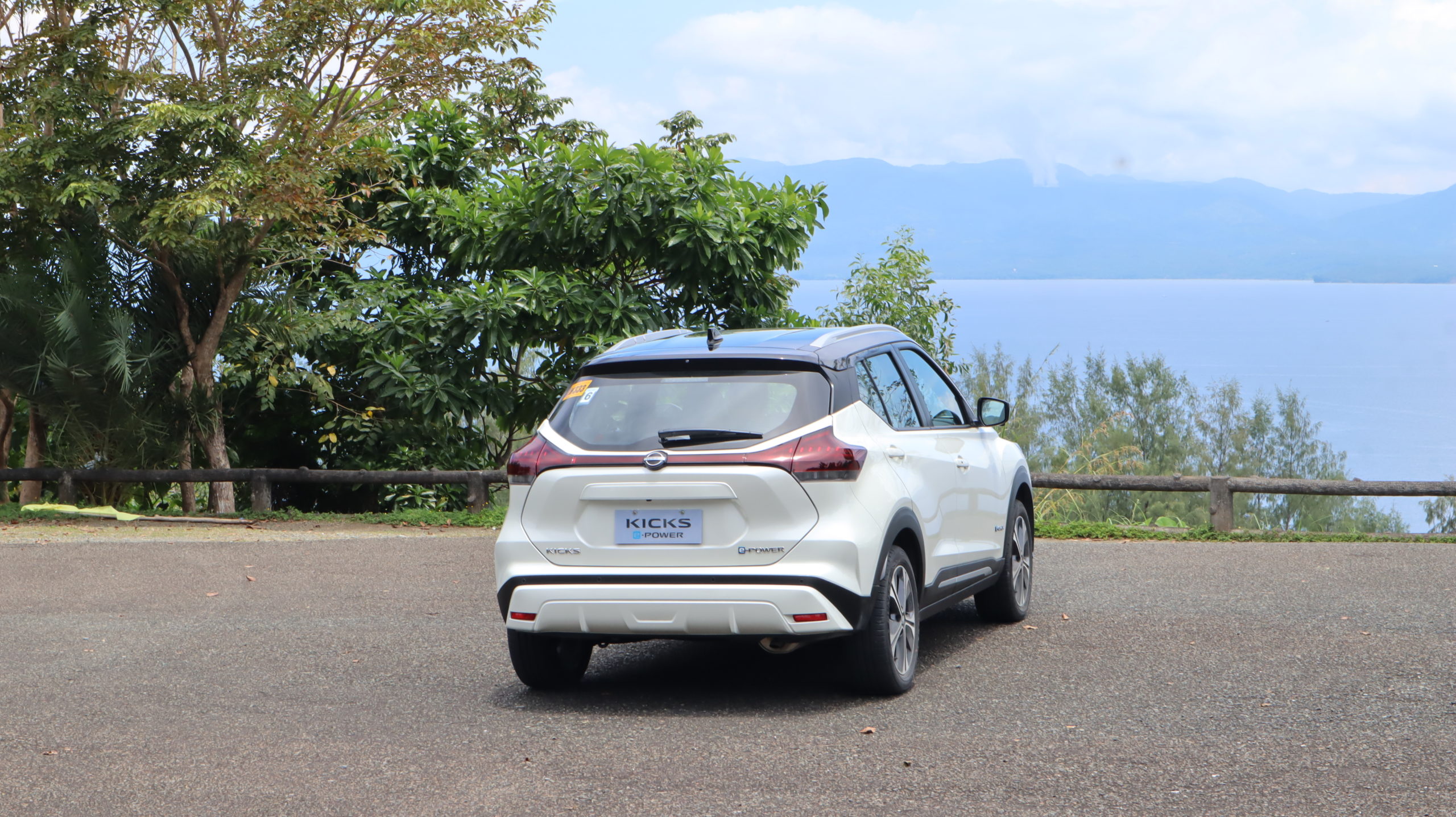
Extensive Range and Economy
This might be a perfect time for a crash course on the Nissan e-POWER system found in the Kicks. To keep it short and sweet, the gasoline engine found in the vehicle only serves to fuel the 3-cylinder DOHC generator, which in turn produces energy for the 2.13 kWh lithium-ion battery funneling power to the electric motor. The drivetrain and gasoline engine have no direct involvement with one another in this situation.
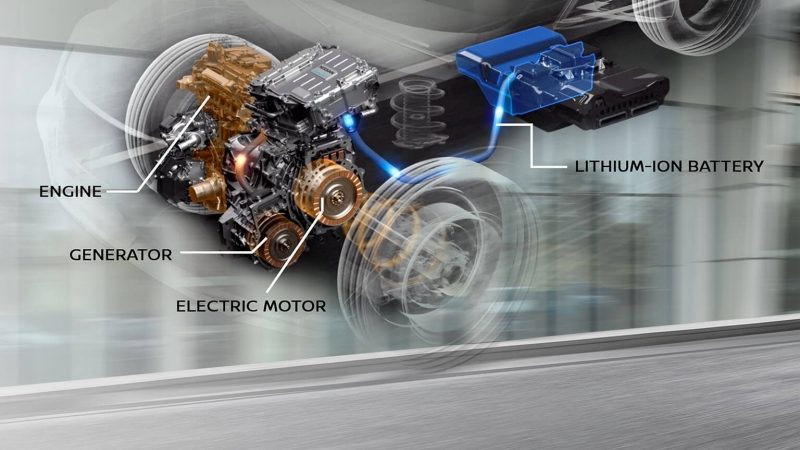
What that means is that the car drives like a full EV, but technically it isn’t. It stands in a grey area between a Full EV and a conventional hybrid like the Corolla Cross. Read a more technical explanation here.
The technology was developed to combat the primary issue with electric vehicles: range anxiety. The world is more environmentally-conscious than ever, going as far as banning Internal Combustion Engine (ICE) vehicles as soon as 2035 in some parts of the globe. However, it still holds true that developing nations such as the Philippines still do not possess the necessary infrastructure to make EVs a viable mode of transportation outside of progressive areas like BGC. Since this still runs exclusively on petrol, owners do not have to worry about the lack of charging stations in the provinces. The Nissan Kicks e-POWER also isn’t picky; regular octane fuel will do.
Nissan rates the crossover at a combined economy of 23 km/l on the city and highways. That’s an attention-grabbing number that tempted us to put it to the test. What’s genuinely impressive is that the Kicks followed this number to the dot for most of the drive. We kept the vehicle in Sport mode all throughout which probably is an indication that we were by no means feathering the throttle (especially when overtaking).
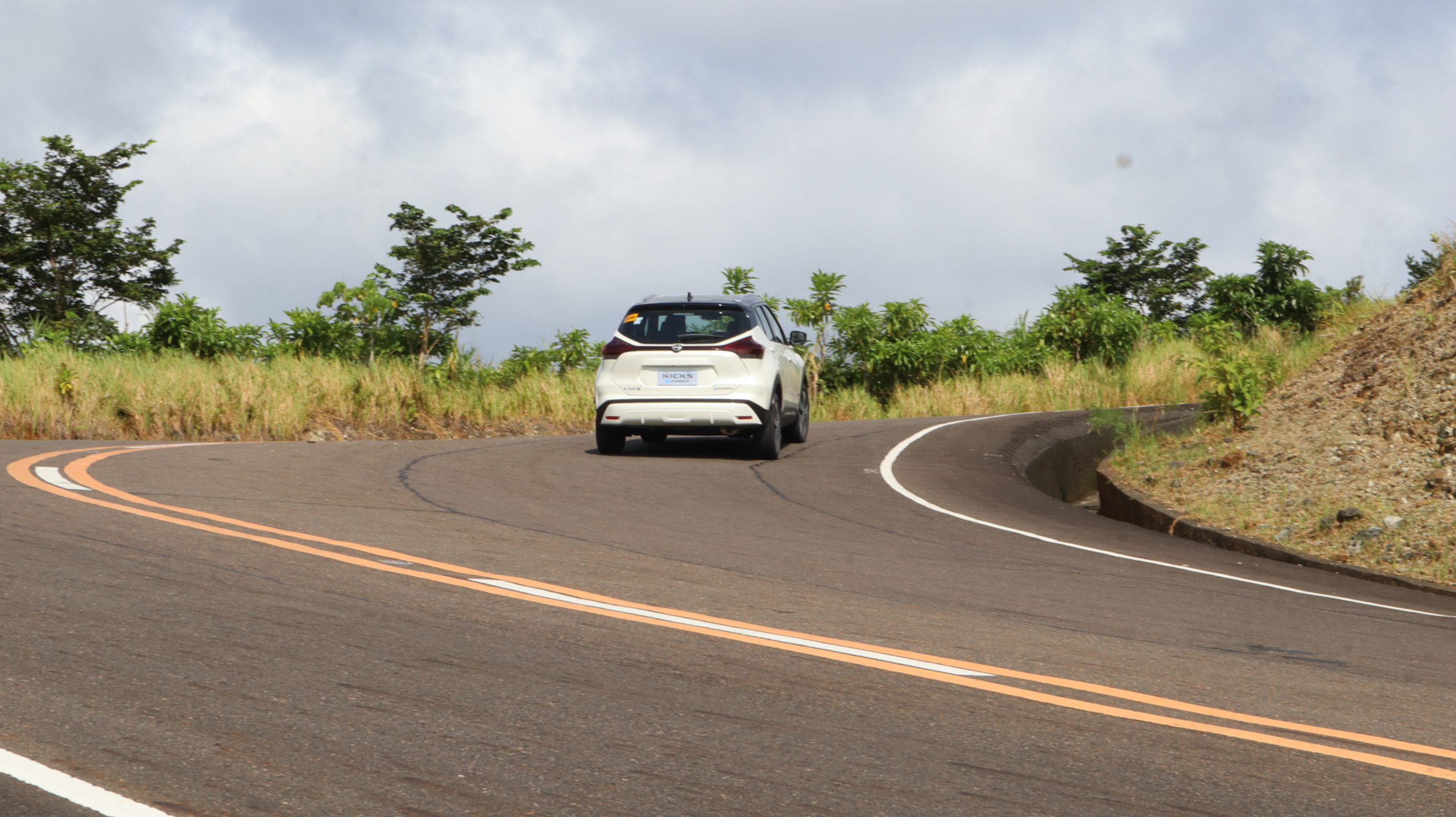
In the final hours of mountain twisties, our heavy-footedness took over and we attacked the touge like we had an R35 GT-R in our hands. Despite our Initial D style of driving, the consumption only dropped to an average of 20 km/l. That is astounding, to say the least.
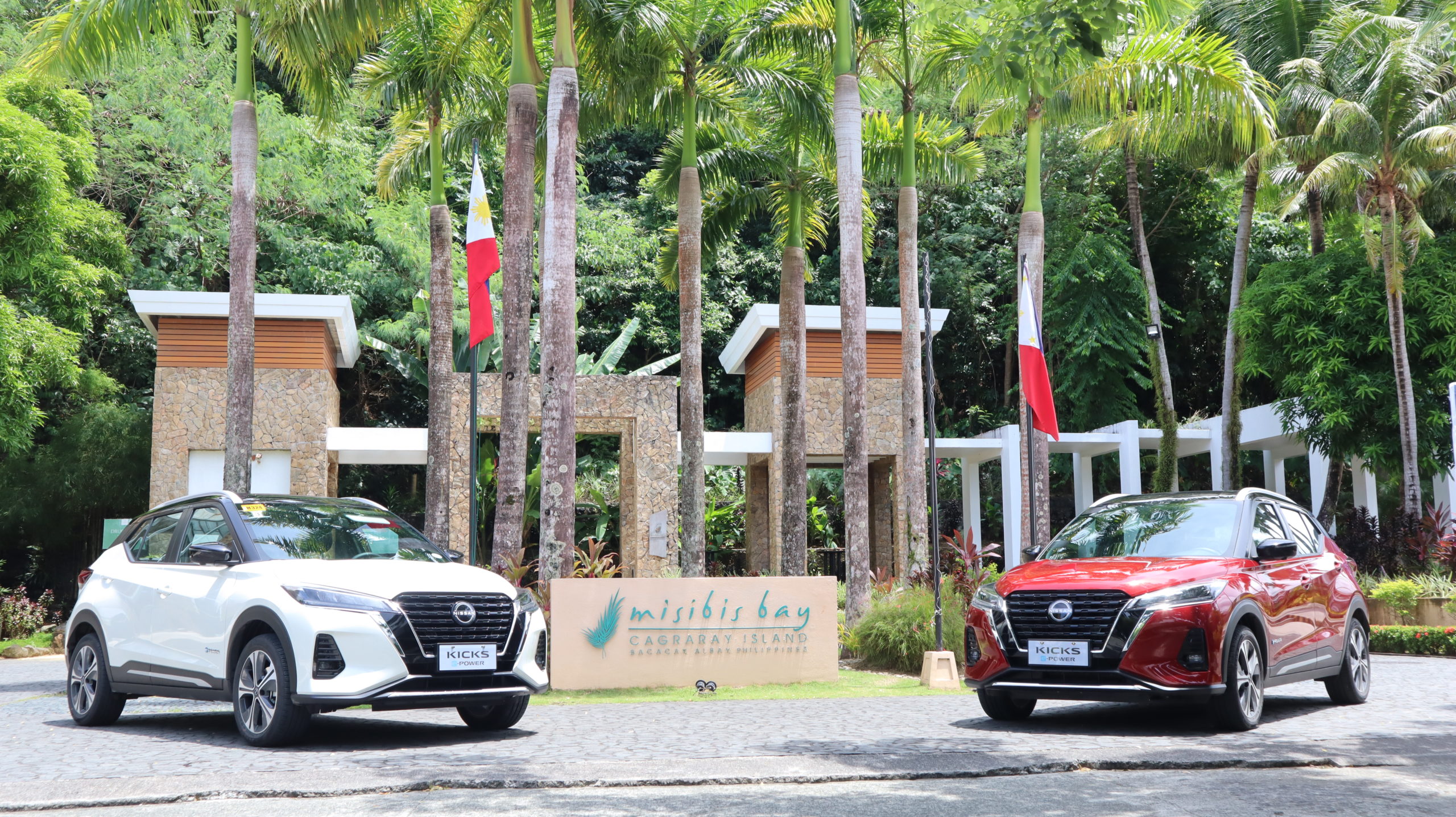
We only topped up our fuel tank before we left for the resort and right before coming back. Looking at the math, reaching Misibis after a 520KM drive with still around a fourth of the tank and 220KM of range adds up to 750-800KM per tank, depending on how you drive. Use more of the ECO features as well as the more aggressive B mode while downhill and there’s a high chance to stretch the 41-liter tank’s range to 800+.
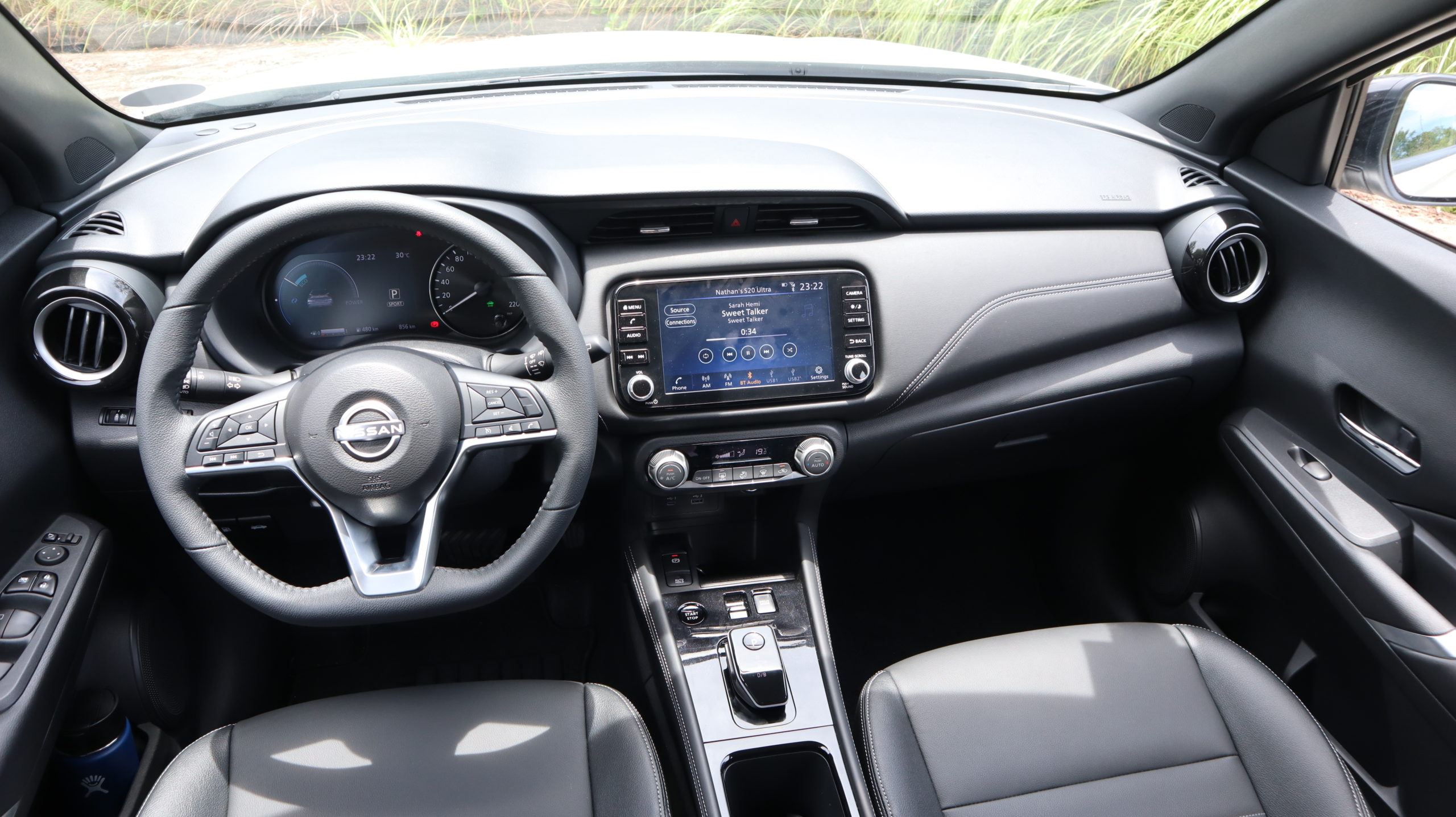
Usable Technology
Inside of the cabin offers a suite of technological features that both provide safety and entertainment apart from the advanced e-POWER system.
At the center of the cabin is an expansive 8-inch touchscreen head unit. What we liked here is the presence of physical buttons surrounding the screen as well as knobs for the air conditioning. We are still firm believers that the essentials must be controlled with knobs and buttons. While the stock Nissan software is plenty responsive and feature-packed, it also carries support for both wired Apple CarPlay and Android Auto.
USB ports adorn the storage cubbies as well as the rear passengers’ center console for charging purposes.
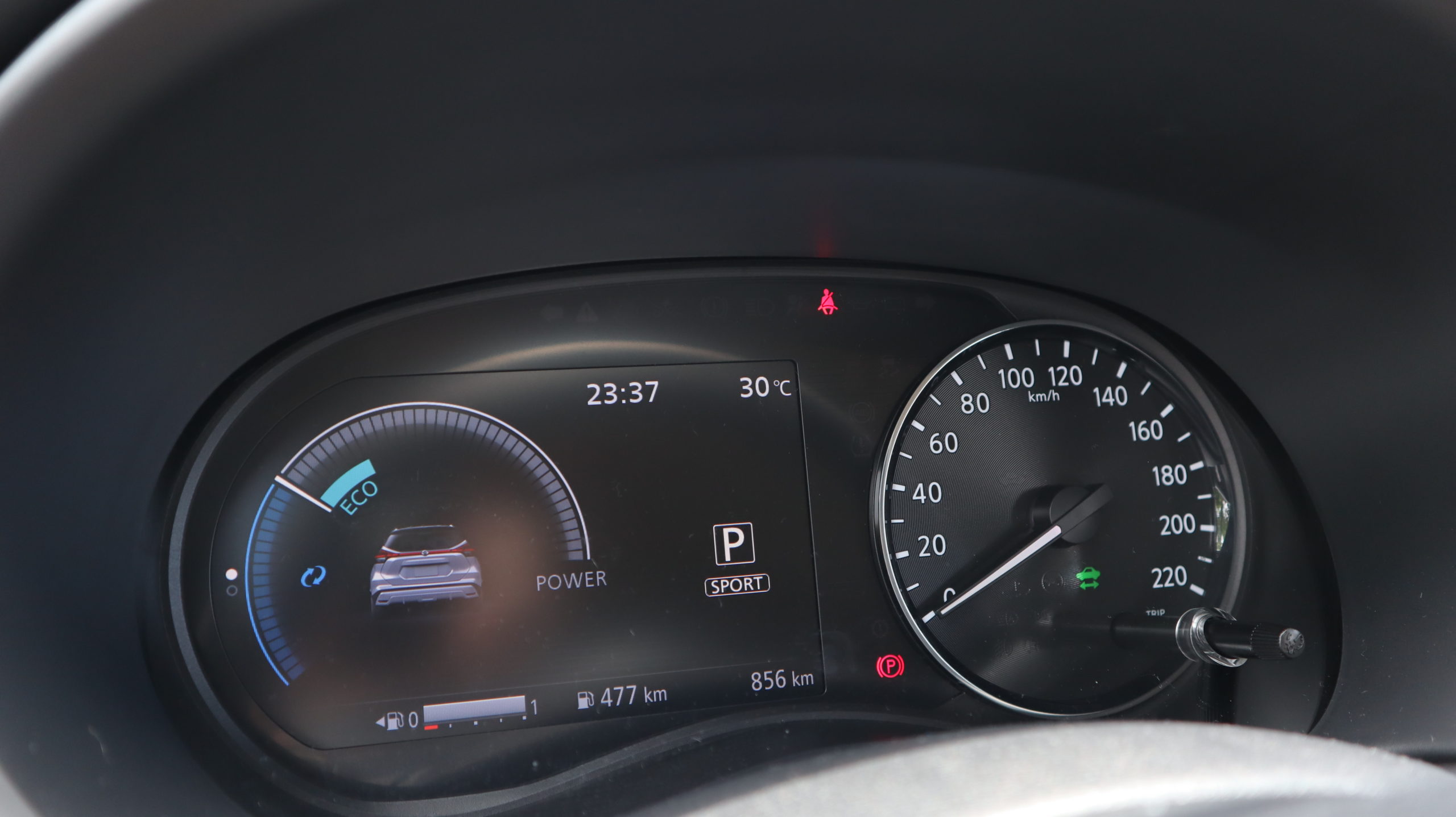
Take a look at the speedometer and you’ll find a refreshing blend of the old and the new. The speed is indicated via a classic analog dash, but the tachometer is replaced by a display that can be configured depending on what info you’d like to see.
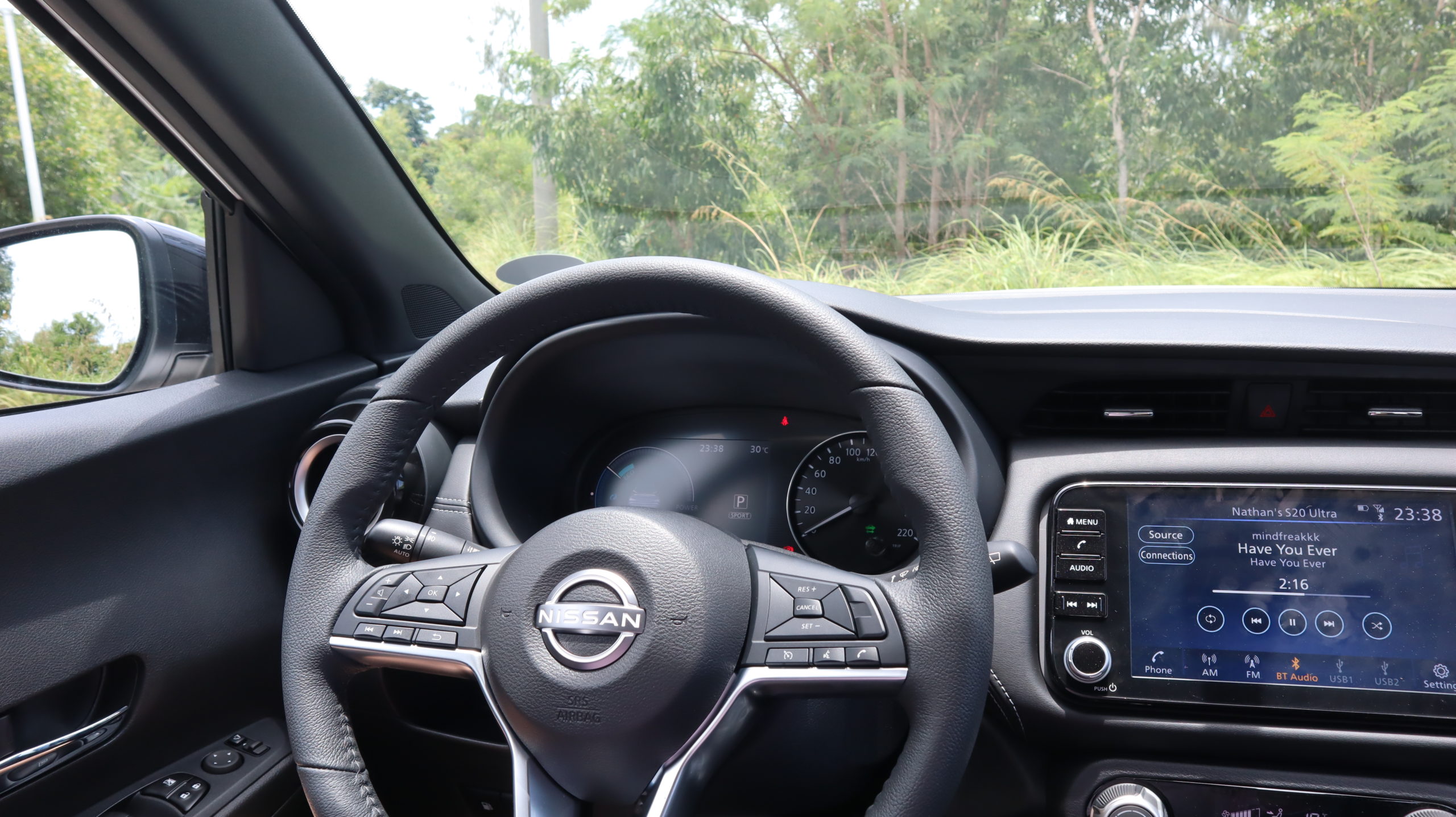
Well-placed steering wheel controls help you get used to navigating this display, and its brightness is adequate for the delivery of necessary information. These essentials include levels of regenerative braking, how much power the electric motor is outputting at any given moment, fuel levels/range, energy flow within the vehicle, and the primary settings menu.
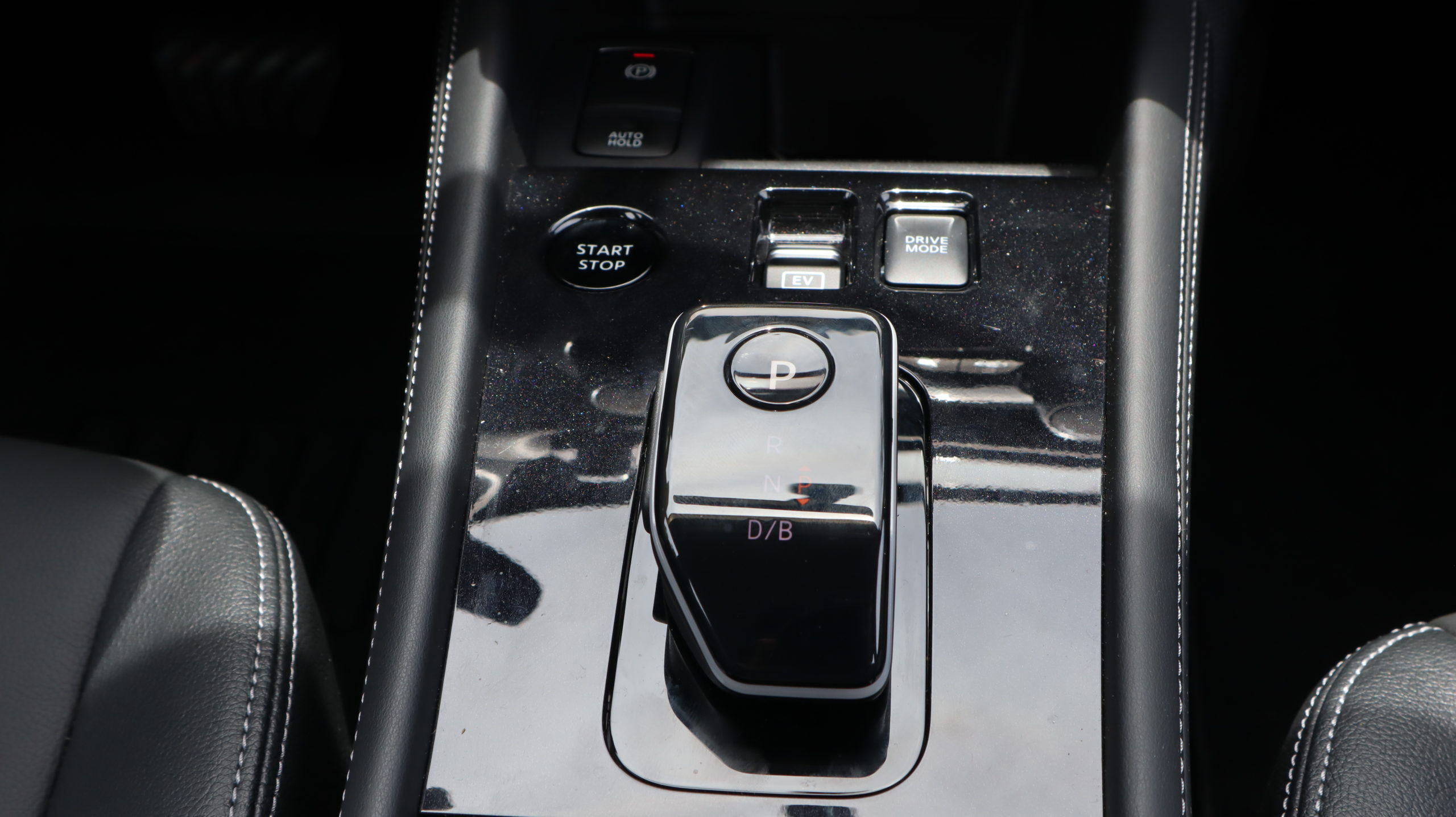
The center console shelters the EV button which temporarily shuts off the generator for a fully-electric experience, as well as the drive mode selector and a basic suite of controls for the handbrake and start/stop. Unique to this vehicle is the design of the gear selector, another quirky feature we saw on the Nissan Leaf. In this case, it took some getting used to – especially with putting the car in neutral. You also have to keep in mind how many clicks you’ve gone through when pulling the lever down in order to know which you’ve toggled. Once you’ve driven the car a bit though, it becomes second nature.
Parking the car is effortless as well. Due to a pair of rear camera and aerial views, any driver will have sufficient information to use when squeezing this crossover into tight spaces within the metro. Safety isn’t a concern as well with a modern feature set of airbags (specifically 2 on the base, 6 on the upper trims), moving object detection, vehicle dynamics control, intelligent forward collision warning, intelligent emergency braking with ABS, and driver attention alert.
A small gripe we had with the Kicks was the non-inclusion of speed-sensing door locks, but it is a small flaw when compared to everything the car possesses.
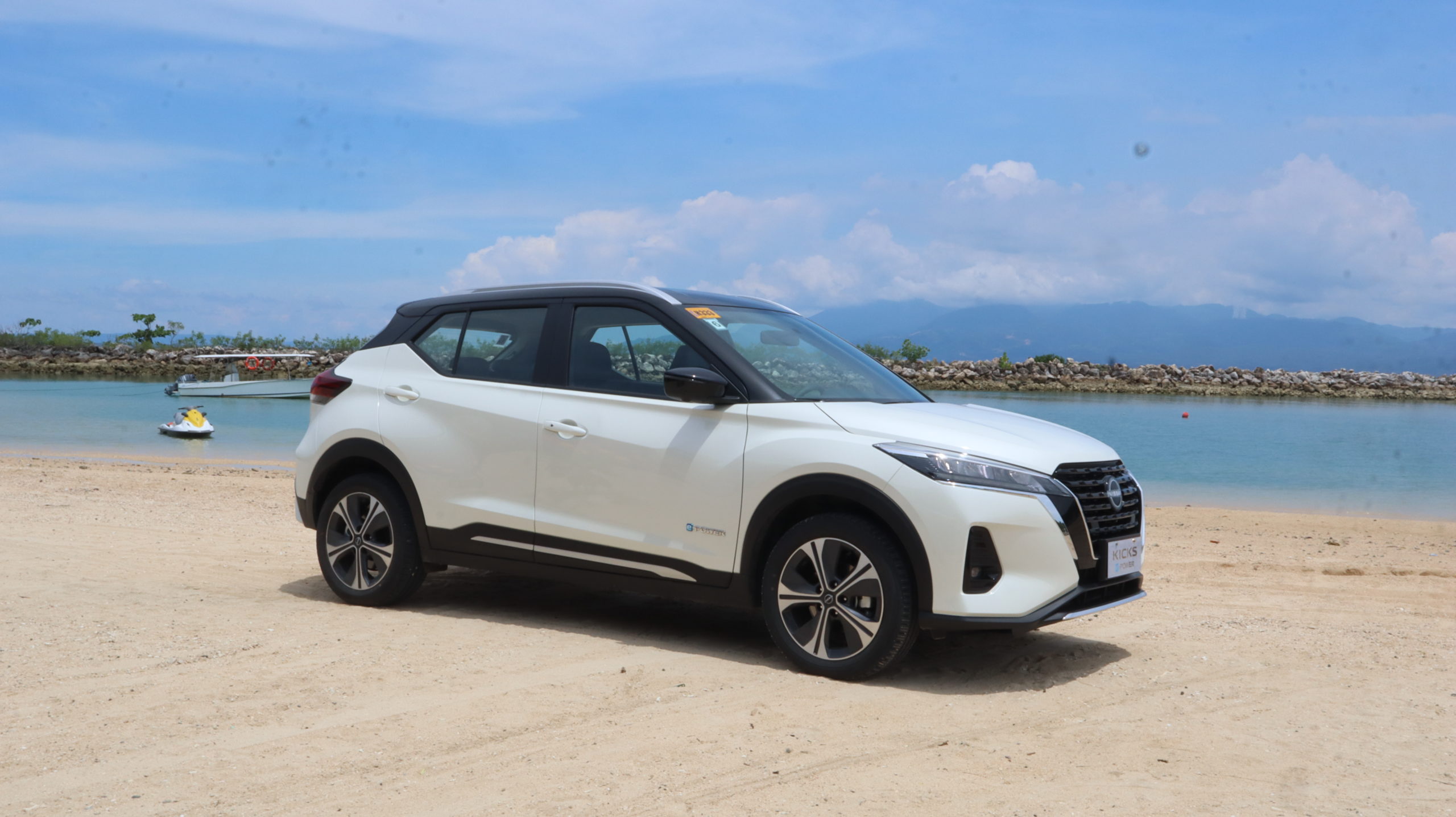
Practicality and Space
The Nissan Kicks e-POWER is amazing in the city, but this lengthy adventure proved its utility when brought off the beaten path. Exploring the less developed areas around the resort proved to be no big deal for the vehicle, even going as far as treading on the beach sand. Climbing up steep inclines with a full cabin of 5 was also completed without struggle. The technical, twisty mountain roads were great fun to tackle in this car, even if those same roads bare their fangs at speed. This just proves the versatility of the crossover as a spacious daily driver while not missing out on the spirit of passionate driving.
All our activities were performed with our carry-on luggage in the cargo area, as well as containers full of snacks, drinks, cleaning essentials, and other necessities for a cross-country adventure.
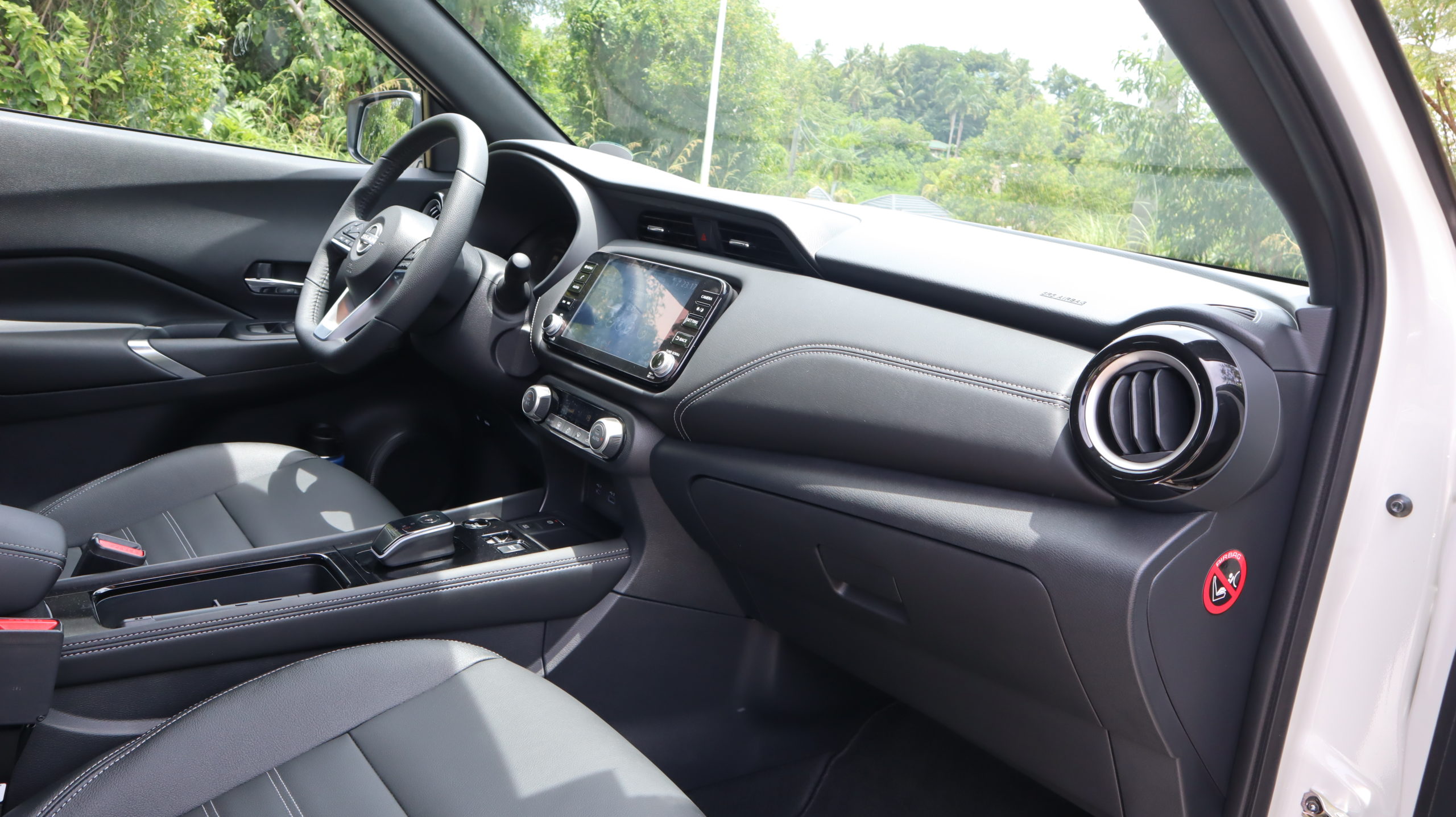
The interior on this car appears to be just like any other Nissan crossover, until you focus into the bits and pieces that make it an e-POWER. Some say that’s boring, but for us it’s a wise and practical choice. As the saying goes: “If it ain’t broke, why fix it?”
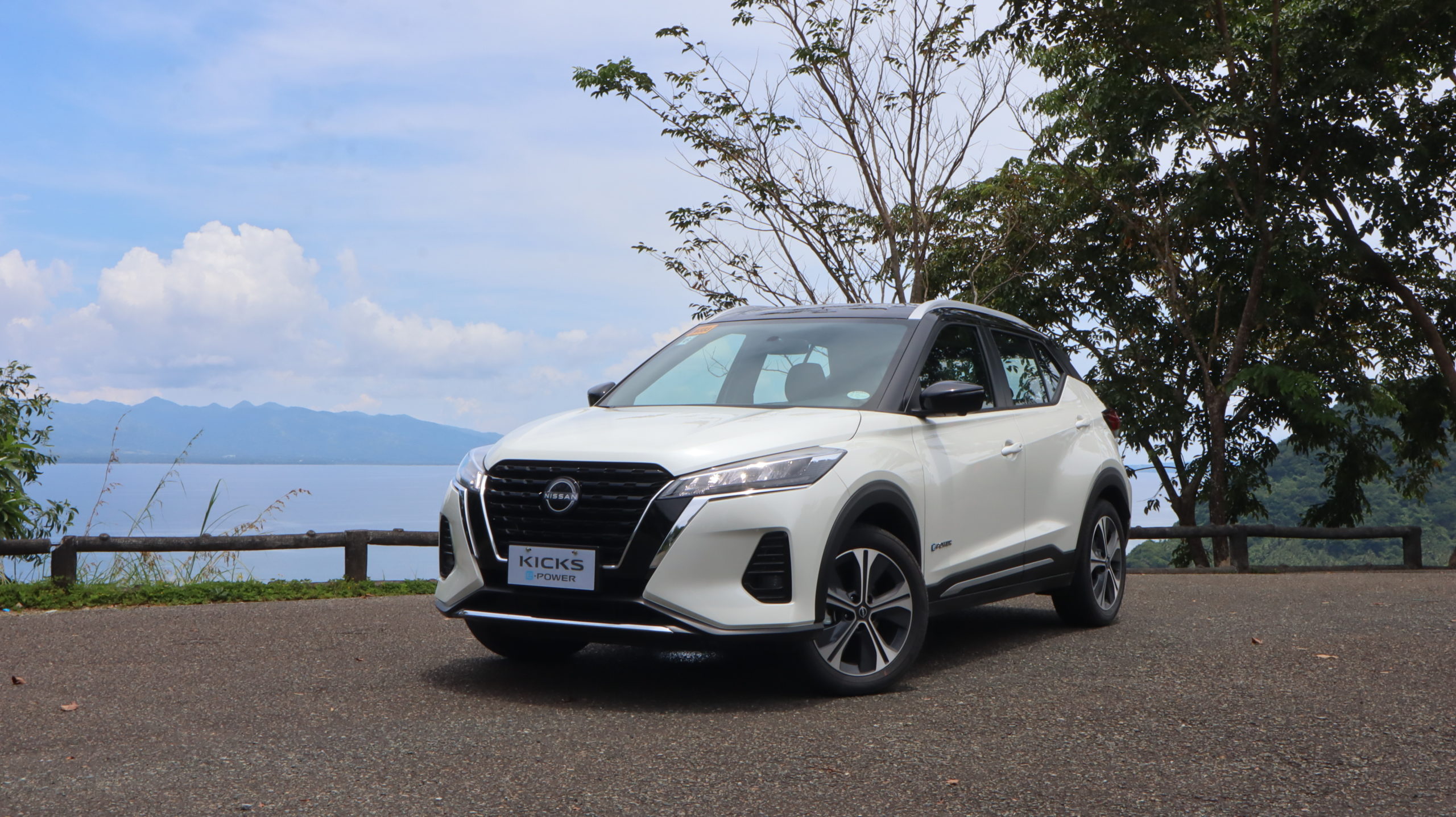
Wrap Up and Conclusions
This is the type of car you can just forget about when using it on your daily commute due to its lack of problems and drama, then remember when it’s time to come into its element on windy back roads. With nothing flashing out to us as glaring weaknesses, we could definitely say that this changed our perception of hybrids and their viability as vehicles beyond just city cruisers.
Overall, the entire package this vehicle delivers is something we’d be happy to own in the Philippines in any variant.
The base Nissan Kicks e-POWER starts out at PHP 1.209M and tops out at PHP 1.509M.


